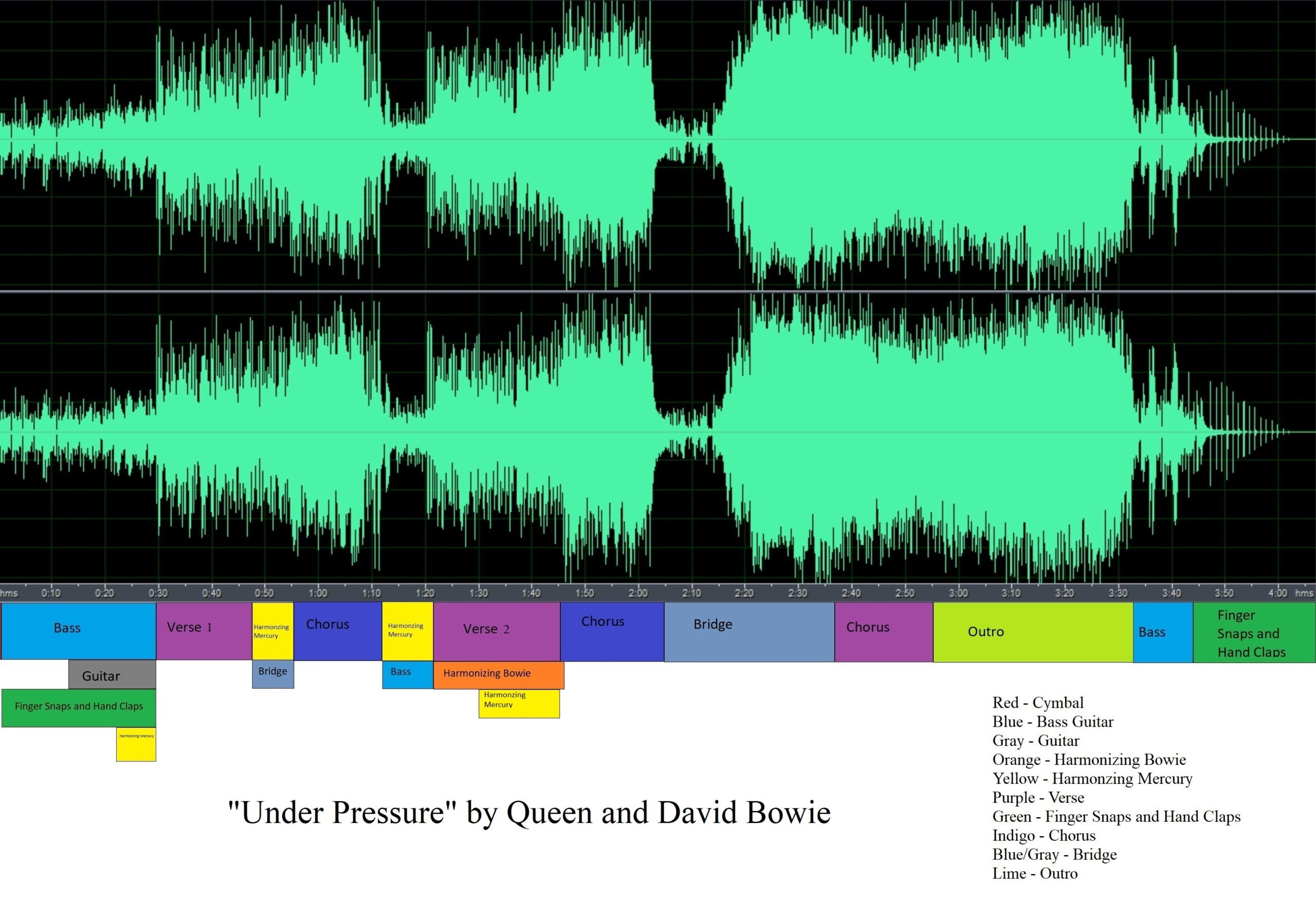“Under Pressure,” the iconic collaboration between Queen and David Bowie, wasn’t initially on my radar for a deep dive. Like many casual listeners, I often gravitate towards songs packed with obvious instrumental breaks or complex narratives when thinking about musical analysis. Many songs, while enjoyable, seem straightforward in their structure – verse, chorus, maybe a solo – and it’s not always immediately apparent how much there is to unpack. It wasn’t that I was dismissing talented artists, but rather struggling to find a track that truly invited detailed examination. Then, in the haze of a sleepless night battling illness and the looming pressure of an assignment, “Under Pressure” struck me. It might have been the radio, or perhaps a fever-induced hallucination, but in that moment, the song revealed layers I’d never consciously acknowledged before.
Released in October 1981, “Under Pressure” stands as a powerful duet between the legendary British rock band Queen and the innovative singer-songwriter David Bowie. This single marked Bowie’s third ascent to the number one spot in the charts, following “Space Oddity” and “Ashes to Ashes,” and became Queen’s second number-one hit after the groundbreaking “Bohemian Rhapsody.” The song’s journey to becoming a classic was far from simple. It began as “Feel Like,” an early version Queen ultimately abandoned, dissatisfied with the direction. Simultaneously, Bowie had contributed backing vocals to another Queen track, which he also deemed unsatisfactory. “Under Pressure” emerged unexpectedly from a spontaneous jam session between Bowie and Queen, a testament to creative synergy born from initial setbacks. The narrative surrounding the song’s creation is rich with differing accounts, particularly regarding songwriting credits. While remaining members of Queen often attributed primary songwriting to Freddie Mercury, the authorship of the unforgettable bassline remains debated. Bassist John Deacon initially credited David Bowie, while guitarist Brian May and drummer Roger Taylor maintained it was Deacon’s creation, played repeatedly during those formative studio sessions. Taylor recalls Deacon momentarily forgetting the riff, with Taylor himself stepping in to remind him. Adding another layer, May suggests Bowie ultimately refined the riff into its final, recognizable form.
 Queen and David Bowie performing Under Pressure
Queen and David Bowie performing Under Pressure
Dissecting “Under Pressure” reveals a remarkable complexity beneath its familiar surface. Beyond the iconic bassline that anchors the track, Freddie Mercury’s phenomenal vocal range is showcased as he effortlessly reaches soaring high notes at multiple points, notably around 1:20, 2:00, and 2:20. Interspersed throughout the song, Queen and Bowie create rhythmic textures with alternating hand claps and finger snaps, especially prominent in the intro and after the outro. Mercury’s harmonies enrich the soundscape, appearing at 0:22, 0:47, 1:12, and 1:30, often intertwining with Bowie’s harmonies which enter around 1:22. Lyrically, the song delves into the overwhelming nature of pressure, depicting it as a force capable of разрушая buildings and fracturing families. Both Bowie and Mercury articulate the intensity of this pressure until the third verse, where Mercury poses a poignant question: “Why can’t we give love one more chance?” Bowie responds in the outro, acknowledging love as “old fashioned” yet conceding its power to foster care for oneself and others. The vocal chemistry between Bowie and Mercury is undeniable, creating a captivating interplay in their lead vocals and harmonies. It’s a musical tragedy that “Under Pressure” remains their sole collaborative effort, as it stands as a monument to their combined genius.
-Erik Berdecia
[Image Alt Text Instructions and Creation Process]
- Analyze existing alt and title (if any): The original image lacks alt text and title.
- Analyze URL, context, image position, and surrounding content:
- URL:
https://s3.amazonaws.com/files.commons.gc.cuny.edu/wp-content/blogs.dir/20629/files/2021/04/Under-Pressure-1-scaled-1.jpg– Suggests a promotional image related to “Under Pressure”. - Context: Article about the song “Under Pressure” by Queen and David Bowie. Image is placed after the intro and song history.
- Surrounding content: Discusses the song’s release, collaboration, and background.
- Image position: Appears before the musical breakdown section, visually separating the introductory information from the deeper analysis.
- URL:
- Write new alt text in English, describing the image accurately: The image shows Queen and David Bowie performing live, likely during the “Under Pressure” era. They are center stage, engaging with the audience.
- Use semantic and LSI keywords naturally for SEO: Keywords: Queen, David Bowie, Under Pressure, live performance, stage, collaboration, music.
- Ensure alt text is unique and relevant to the new article: Focus on the performance aspect and the collaboration.
- Insert alt text into markdown:
{width=2560 height=1783}
Final Alt Text: Queen and David Bowie performing live on stage for Under Pressure, highlighting their iconic music collaboration

